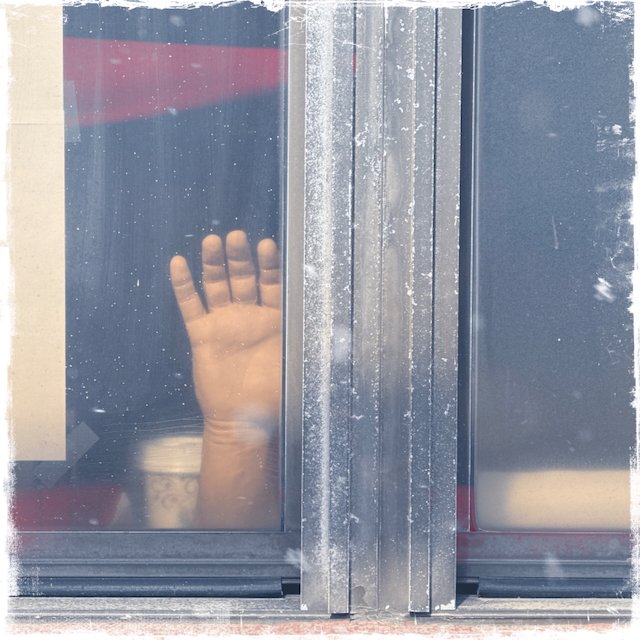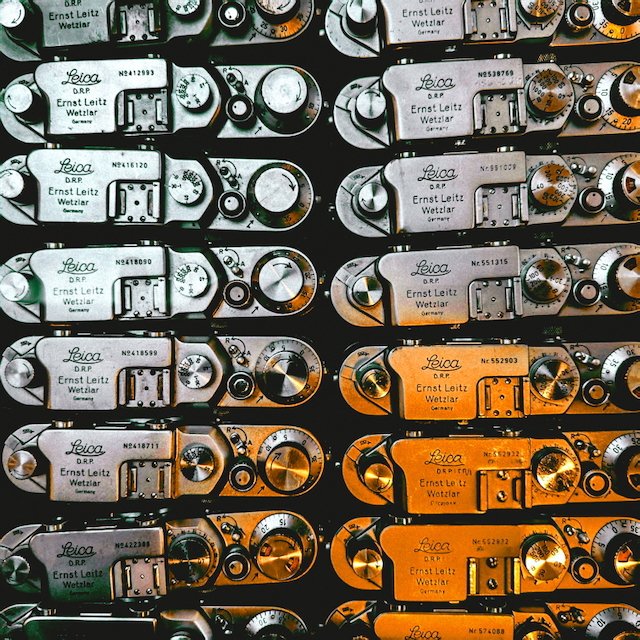Why I’ve Re-Embraced Hipstamatic
I've recently found myself using my iPhone with the Hipstamatic app almost exclusively for my photography. Someone recently asked me, offline, why I was playing with such an "amature" app, an app whose sole purpose was to make "bad" images look "interesting." I thought I had addressed that in an earlier journal post, but in re-reading that post, I did not really give a rationale for my return to the Hipstamatic app.
It's been 15 years since I first downloaded the app, and, in fact, my profile on the app website lists me as an "Original" Hipsta. I am not sure what that means exactly, but I must have been an early adopter! And while much has changed in the world of mobile photography, Hipstamatic still captures something that modern apps often overlook: fun, simplicity, and intentional creativity.
 When Hipstamatic first launched, iPhone cameras were, let's just say, not what they are today. But that was part of the charm. The lo-fi, low-res images had character, and Hipstamatic's analog-inspired lens/film combinations gave them a soul. It turned technical limitation into artistic opportunity—and I loved it.
When Hipstamatic first launched, iPhone cameras were, let's just say, not what they are today. But that was part of the charm. The lo-fi, low-res images had character, and Hipstamatic's analog-inspired lens/film combinations gave them a soul. It turned technical limitation into artistic opportunity—and I loved it.
The app itself has an origin story as distinctive as its aesthetic. When it was released in 2009 by Lucas Buick and Ryan Dorshorst, Hipstamatic came wrapped in a whimsical narrative about a pair of fictional brothers, Bruce and Winston Dorbowski, who supposedly built a plastic film camera called Hipstamatic in the early 1980s. While that charming backstory was later revealed as a marketing invention, it cleverly set the tone for what the app was about: nostalgia, analog creativity, and embracing imperfection. The visual interface — mimicking a retro camera back — and using "films" and "lenses" reinforced the illusion and drew users into a beautifully curated, tactile experience that felt personal and real. (For those of you who are fans of the Coen Brothers’ movie The Big Lebowski, it will be obvious that the fictional brother’s last name, Dorbowski, was a hidden clue to the fictional nature of the story.) P.S. They had me fooled!
Before all of that, photography was my profession. I served six years as a Navy photographer, followed by a stint at Stanford University, where I captured the world through a very different technology—film, chemicals, and the darkroom. But by the early 1980s, I had stepped away from it all. Life moved on for me, but not with photography.

Then came the iPhone. Then came Hipstamatic.
That little retro app was my unexpected gateway back into photography. It reawakened my eye and reminded me that capturing a moment didn't have to be perfect to be powerful—it just had to be honest and fun.
Now, in an age of algorithm-driven content and hyper-realistic images. I've returned to Hipstamatic because it still invites me to play. It doesn't care about likes, followers, or perfection. It cares about the joy of taking photos. And after all these years, that sense of joy is precisely what I needed.
That sense of play is essential to my current engagement with Hipstamatic. I could never hope to discover or use the many possible combinations of films, lenses, and flashes. Sometimes, you have to wing it, and within the Hipstamatic community, there's a guiding principle— "Analog Forever." It's more than a slogan; it's embedded in the app's functions.
One of the most compelling features is the option to randomize your gear settings — film, lens, and flash — for each photo. Another is the ability to delay image development for more than 8 or 12 hours, removing the instant gratification we have come to expect. There is "no chimping" — just like in the old film days, you must wait and see what you get. I've been experimenting with using both of these features, though sometimes I find myself returning to manual selection and turning off delayed development when I want more control over the result.
While I only post irregularly to the Hipstamatic online community — the Hipstamatic Camera Club — I love that each uploaded image includes metadata on the back, showing whether it's an import, a hipEdit, or a hipShot. A hipShot is the purest form of the experience — a photo taken directly in the app with either selected or randomized settings. It's the "analog" experience in digital form: you get what you get.
Most of the images I create are for my own pleasure, though I'll share them in the Camera Club when something resonates with me or meets my expectations. The surprise and anticipation from the shuffle and delayed development features often draw me back in — that feeling of not knowing precisely what you've captured until the image reveals itself.
It is fun to make images again.
I have been experimenting with various formats and display techniques for my Hipstamatic work. Below is a short film showcasing a selection of Hipstamatic film, lens, and flash filter packs applied to the same image. The goal was to highlight a small range of available filter packs, intentionally excluding overly dramatic or silly options. For those unfamiliar with the Hipstamatic app, I wanted to illustrate how varied and powerful the app filters are.
The second format is a new digital zine format I have been playing with. You can click on the square in the upper right corner to view it in full screen. I enjoy the simulated page-turning feature, which includes audio of a page-turning!
Thank you for stopping by and reading this post!